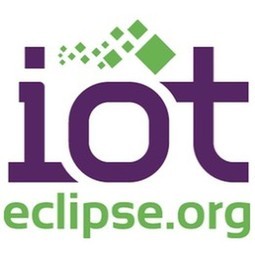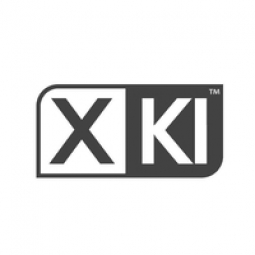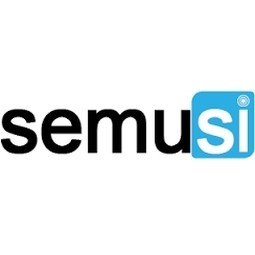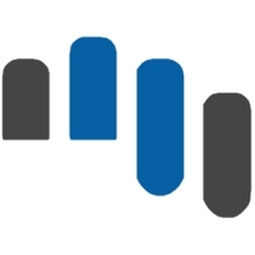Overview | ||||||
| Supplier Slogan | Open Source for IoT | creating a smart world... | People First, Things Second. | Build Smarter Apps. Engage Users Smartly | ||
| HQ Location | United States | United States | United States | Austria | Singapore | Armenia |
| Year Founded | 2014 | 2013 | 2015 | 2018 | 2012 | 2017 |
| Company Type | Private | Private | Private | Private | Private | Private |
| Stock Ticker | ||||||
| Revenue | < $10m | < $10m | < $10m | < $10m | < $10m | < $10m |
| Employees | < 10 | < 10 | 11 - 50 | < 10 | < 10 | < 10 |
| Website | Open website | Open website | Open website | Open website | Open website | Open website |
| Company Description | An Open Source reference architecture developed by IoTivity. | Eclipse IoT is an ecosystem of companies and individuals that are working together to establish an Internet of Things based on open technologies. Eclipse IoT provides the technology needed to build IoT Devices, Gateways, and Cloud Platforms.
The Eclipse IoT Working Group is an industry collaboration of companies who invest and promote an Open Source community for IoT. | M2MLabs Mainspring is an application framework for building machine-to-machine applications like vehicle Tracking or machine remote montoring. | XKI focuses on the integration of the Internet-of-Things, Blockchain and Machine Learning. | Semusi enables App Developer to easily deliver smarter Apps which learn, personalize and engage users when relevant.
Semusi is a context-awareness SaaS and SDK platform for software developers to build smarter apps. Using techniques such as Machine Learning, Smart Sensors, and natural language algorithms, Semusi lets developers build highly personalised and engaging apps that appeal to customers on a more personal basis. | Grovf is an engineering company aimed to develop hardware and software products to assist Industrial Internet of Things (IIoT) and Big Data problems.
Here at Grovf we help our industrial customers to solve IoT generated Big Data storage problems using hardware (FPGA) implementation of DB functionality in order to close the gap between IoT generated data throughput and software database transaction speed, resulting 20x faster transactions and power saving. |
| IoT Solutions | The IoTivity project is sponsored by the Open Connectivity Foundation (OCF), a group of industry leaders who will be developing a standard specification and certification program to address these challenges. | Open source components for IoT Devices
• Eclipse Edje provides an high-level API for accessing hardware features provided by microcontrollers (e.g GPIO, ADC, MEMS, etc.). It can directly connect to native libraries, drivers, and board support packages provided by silicon vendors.
• Eclipse Paho provides an implementation of the MQTT protocol.
• Eclipse Wakaama provides an implementation of the OMA LWM2M standard.
Integrated IoT Gateway and Smart Devices stacks
• Eclipse Kura provides a general purpose middleware and application Container for IoT gateway services.
• Eclipse SmartHome provides an IoT gateway platform that is specifically focused on the home automation domain.
• Eclipse 4diac provides an industrial-grade Open Source infrastructure for distributed industrial process measurement and control systems based on the IEC 61499 standard. 4DIAC is ideally suited for Industrie 4.0 and Industrial IoT applications in a manufacturing setting. The IEC 61499 standard defines a domain specific modeling language for developing distributed industrial control solutions by providing a vendor independent format and for simplifying support for Controller to Controller communication.
IoT Cloud Platform Stack
The IoT Cloud Platform represents the software infrastructure and services required to enable an IoT solution. An IoT Cloud Platform typically operates on a cloud infrastructure (e.g. OpenShift, AWS, Microsoft Azure, Cloud Foundry) or inside an enterprise data center and is expected to scale both horizontally, to support the large number of devices connected, as well as vertically to address the variety of IoT solutions. The IoT Cloud Platform will facilitate the Interoperability of the IoT solution with existing enterprise applications and other IoT solutions.
Cloud stacks
Eclipse Kapua is a modular platform providing the services required to manage IoT gateways and smart edge devices. Kapua provides a core integration framework and an initial set of core IoT services including a device registry, device management services, messaging services, data management, and Application Enablement. The goal of Eclipse Kapua is to create a growing ecosystem of micro services through the extensions provided by other Eclipse IoT projects and organizations.
Eclipse OM2M is an IoT Platform specific for the telecommunication industry, based on the oneM2M specification. It provides a horizontal Common Service Entity (CSE) that can be deployed in an M2M server, a gateway, or a device. Each CSE provides Application Enablement, Security, Triggering, Notification, Persistency, Device Interworking, Device Management.
Open source components for IoT Cloud Platforms
• Eclipse Hono
• Eclipse Mosquitto
• Eclipse Leshan
• Eclipse hawkBit
• Eclipse BIRT | M2MLabs’ Java-based framework is aimed at M2M communications in applications such as remote monitoring, fleet management, and smart grids. Like many IoT frameworks, Mainspring relies heavily on a REST web-service, and offers device configuration and modeling tools. | XKI.Cloud - https://xki.cloud | Semusi handles the heavy lifting to sense a mobile users context in real time using sensors, big data and behavioral algorithms. Publishers and brands can focus on easily building highly engaging mobile experiences which are gender, places, activity aware. | The FPGA - Accelerated Time Series Database is a dedicated hardware for IoT data storage. Smart Sensors data pass directly into FPGA from Ethernet adapter bypassing any type of operating systems and software layers. All data processing takes place under FPGA on fly and streams into SSD for storage.
Artificial Intelligence algorithms are used to continuously evaluate interconnections between channels, classify and predict data. Device provides general functionality of software enabled time series database systems while implemented on hardware layer. FPGA’s native parallel feature is heavily used to achieve the data throughput in order of magnitude greater then all available software enabled time series database systems can offer.
|
| Key Customers | Solair, OmSense, E.ON, Noja Power | Mainspring takes care of device communication, configuration as well as data storage and retrieval so that application developers can focus on business logic purely. M2M applications can be prototyped in hours rather than weeks and finally transfered to a high performance execution environment built on top of a standard J2EE server and the highly scaleable Apache Cassandra database. | Define targeting rules to engage users when relevant. Publishers and advertisers define targeting rules to send notification & ads based on a users gender and real time, activity & place profile to drive engagement | |||
| Subsidiary | ||||||
| Parent Company | ||||||
IoT Snapshot | ||||||
| Technologies | Application Infrastructure & Middleware | Application Infrastructure & MiddlewarePlatform as a Service (PaaS) | Application Infrastructure & Middleware | Application Infrastructure & MiddlewarePlatform as a Service (PaaS) | Application Infrastructure & MiddlewareInfrastructure as a Service (IaaS) | Analytics & ModelingApplication Infrastructure & MiddlewareCybersecurity & PrivacyProcessors & Edge Intelligence |
| Industries | Finance & InsuranceRetail | |||||
| Use Cases | Intrusion Detection Systems | |||||
| Functions | ||||||
| Services | Software Design & Engineering Services | |||||
Technology Stack | ||||||
| Infrastructure as a Service (IaaS) | None | None | None | None | Minor | None |
| Platform as a Service (PaaS) | None | Minor | None | Minor | None | None |
| Application Infrastructure & Middleware | Minor | Minor | Minor | Moderate | Minor | Strong |
| Analytics & Modeling | None | None | None | None | None | Minor |
| Functional Applications | None | None | None | None | None | None |
| Cybersecurity & Privacy | None | None | None | None | None | Moderate |
| Networks & Connectivity | None | None | None | None | None | None |
| Processors & Edge Intelligence | None | None | None | None | None | Minor |
| Sensors | None | None | None | None | None | None |
| Automation & Control | None | None | None | None | None | None |
| Robots | None | None | None | None | None | None |
| Drones | None | None | None | None | None | None |
| Wearables | None | None | None | None | None | None |
| Actuators | None | None | None | None | None | None |
| Other | None | None | None | None | None | None |
Similar Suppliers | ||||||
| Similar Suppliers | ||||||
Partners | ||||||
| Partners |
Overview | ||||||
| Supplier Slogan | Open Source for IoT | creating a smart world... | People First, Things Second. | Build Smarter Apps. Engage Users Smartly | ||
| HQ Location | United States | United States | United States | Austria | Singapore | Armenia |
| Year Founded | 2014 | 2013 | 2015 | 2018 | 2012 | 2017 |
| Company Type | Private | Private | Private | Private | Private | Private |
| Stock Ticker | ||||||
| Revenue | < $10m | < $10m | < $10m | < $10m | < $10m | < $10m |
| Employees | < 10 | < 10 | 11 - 50 | < 10 | < 10 | < 10 |
| Website | Open website | Open website | Open website | Open website | Open website | Open website |
| Company Description | An Open Source reference architecture developed by IoTivity. | Eclipse IoT is an ecosystem of companies and individuals that are working together to establish an Internet of Things based on open technologies. Eclipse IoT provides the technology needed to build IoT Devices, Gateways, and Cloud Platforms.
The Eclipse IoT Working Group is an industry collaboration of companies who invest and promote an Open Source community for IoT. | M2MLabs Mainspring is an application framework for building machine-to-machine applications like vehicle Tracking or machine remote montoring. | XKI focuses on the integration of the Internet-of-Things, Blockchain and Machine Learning. | Semusi enables App Developer to easily deliver smarter Apps which learn, personalize and engage users when relevant.
Semusi is a context-awareness SaaS and SDK platform for software developers to build smarter apps. Using techniques such as Machine Learning, Smart Sensors, and natural language algorithms, Semusi lets developers build highly personalised and engaging apps that appeal to customers on a more personal basis. | Grovf is an engineering company aimed to develop hardware and software products to assist Industrial Internet of Things (IIoT) and Big Data problems.
Here at Grovf we help our industrial customers to solve IoT generated Big Data storage problems using hardware (FPGA) implementation of DB functionality in order to close the gap between IoT generated data throughput and software database transaction speed, resulting 20x faster transactions and power saving. |
| IoT Solutions | The IoTivity project is sponsored by the Open Connectivity Foundation (OCF), a group of industry leaders who will be developing a standard specification and certification program to address these challenges. | Open source components for IoT Devices
• Eclipse Edje provides an high-level API for accessing hardware features provided by microcontrollers (e.g GPIO, ADC, MEMS, etc.). It can directly connect to native libraries, drivers, and board support packages provided by silicon vendors.
• Eclipse Paho provides an implementation of the MQTT protocol.
• Eclipse Wakaama provides an implementation of the OMA LWM2M standard.
Integrated IoT Gateway and Smart Devices stacks
• Eclipse Kura provides a general purpose middleware and application Container for IoT gateway services.
• Eclipse SmartHome provides an IoT gateway platform that is specifically focused on the home automation domain.
• Eclipse 4diac provides an industrial-grade Open Source infrastructure for distributed industrial process measurement and control systems based on the IEC 61499 standard. 4DIAC is ideally suited for Industrie 4.0 and Industrial IoT applications in a manufacturing setting. The IEC 61499 standard defines a domain specific modeling language for developing distributed industrial control solutions by providing a vendor independent format and for simplifying support for Controller to Controller communication.
IoT Cloud Platform Stack
The IoT Cloud Platform represents the software infrastructure and services required to enable an IoT solution. An IoT Cloud Platform typically operates on a cloud infrastructure (e.g. OpenShift, AWS, Microsoft Azure, Cloud Foundry) or inside an enterprise data center and is expected to scale both horizontally, to support the large number of devices connected, as well as vertically to address the variety of IoT solutions. The IoT Cloud Platform will facilitate the Interoperability of the IoT solution with existing enterprise applications and other IoT solutions.
Cloud stacks
Eclipse Kapua is a modular platform providing the services required to manage IoT gateways and smart edge devices. Kapua provides a core integration framework and an initial set of core IoT services including a device registry, device management services, messaging services, data management, and Application Enablement. The goal of Eclipse Kapua is to create a growing ecosystem of micro services through the extensions provided by other Eclipse IoT projects and organizations.
Eclipse OM2M is an IoT Platform specific for the telecommunication industry, based on the oneM2M specification. It provides a horizontal Common Service Entity (CSE) that can be deployed in an M2M server, a gateway, or a device. Each CSE provides Application Enablement, Security, Triggering, Notification, Persistency, Device Interworking, Device Management.
Open source components for IoT Cloud Platforms
• Eclipse Hono
• Eclipse Mosquitto
• Eclipse Leshan
• Eclipse hawkBit
• Eclipse BIRT | M2MLabs’ Java-based framework is aimed at M2M communications in applications such as remote monitoring, fleet management, and smart grids. Like many IoT frameworks, Mainspring relies heavily on a REST web-service, and offers device configuration and modeling tools. | XKI.Cloud - https://xki.cloud | Semusi handles the heavy lifting to sense a mobile users context in real time using sensors, big data and behavioral algorithms. Publishers and brands can focus on easily building highly engaging mobile experiences which are gender, places, activity aware. | The FPGA - Accelerated Time Series Database is a dedicated hardware for IoT data storage. Smart Sensors data pass directly into FPGA from Ethernet adapter bypassing any type of operating systems and software layers. All data processing takes place under FPGA on fly and streams into SSD for storage.
Artificial Intelligence algorithms are used to continuously evaluate interconnections between channels, classify and predict data. Device provides general functionality of software enabled time series database systems while implemented on hardware layer. FPGA’s native parallel feature is heavily used to achieve the data throughput in order of magnitude greater then all available software enabled time series database systems can offer.
|
| Key Customers | Solair, OmSense, E.ON, Noja Power | Mainspring takes care of device communication, configuration as well as data storage and retrieval so that application developers can focus on business logic purely. M2M applications can be prototyped in hours rather than weeks and finally transfered to a high performance execution environment built on top of a standard J2EE server and the highly scaleable Apache Cassandra database. | Define targeting rules to engage users when relevant. Publishers and advertisers define targeting rules to send notification & ads based on a users gender and real time, activity & place profile to drive engagement | |||
| Subsidiary | ||||||
| Parent Company | ||||||
IoT Snapshot | ||||||
| Technologies | Application Infrastructure & Middleware | Application Infrastructure & MiddlewarePlatform as a Service (PaaS) | Application Infrastructure & Middleware | Application Infrastructure & MiddlewarePlatform as a Service (PaaS) | Application Infrastructure & MiddlewareInfrastructure as a Service (IaaS) | Analytics & ModelingApplication Infrastructure & MiddlewareCybersecurity & PrivacyProcessors & Edge Intelligence |
| Industries | Finance & InsuranceRetail | |||||
| Use Cases | Intrusion Detection Systems | |||||
| Functions | ||||||
| Services | Software Design & Engineering Services | |||||
Technology Stack | ||||||
| Infrastructure as a Service (IaaS) | None | None | None | None | Minor | None |
| Platform as a Service (PaaS) | None | Minor | None | Minor | None | None |
| Application Infrastructure & Middleware | Minor | Minor | Minor | Moderate | Minor | Strong |
| Analytics & Modeling | None | None | None | None | None | Minor |
| Functional Applications | None | None | None | None | None | None |
| Cybersecurity & Privacy | None | None | None | None | None | Moderate |
| Networks & Connectivity | None | None | None | None | None | None |
| Processors & Edge Intelligence | None | None | None | None | None | Minor |
| Sensors | None | None | None | None | None | None |
| Automation & Control | None | None | None | None | None | None |
| Robots | None | None | None | None | None | None |
| Drones | None | None | None | None | None | None |
| Wearables | None | None | None | None | None | None |
| Actuators | None | None | None | None | None | None |
| Other | None | None | None | None | None | None |
Similar Suppliers | ||||||
| Similar Suppliers | ||||||
Partners | ||||||
| Partners |






